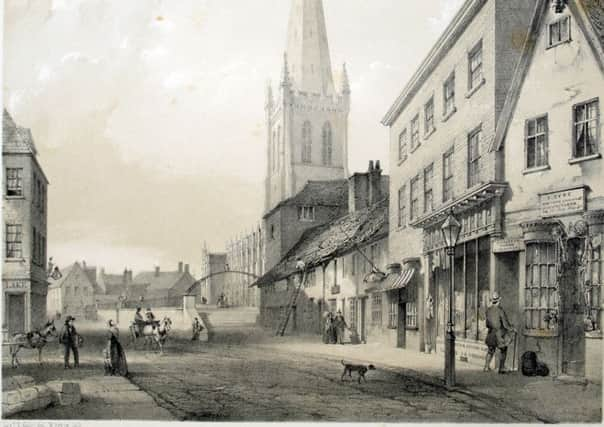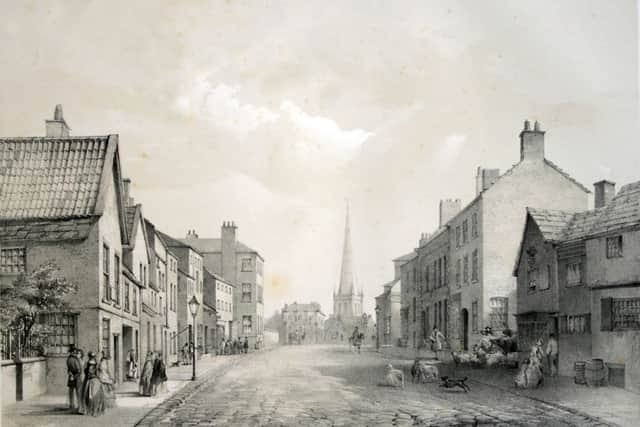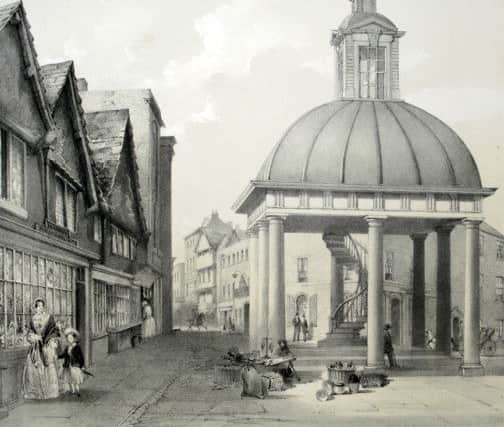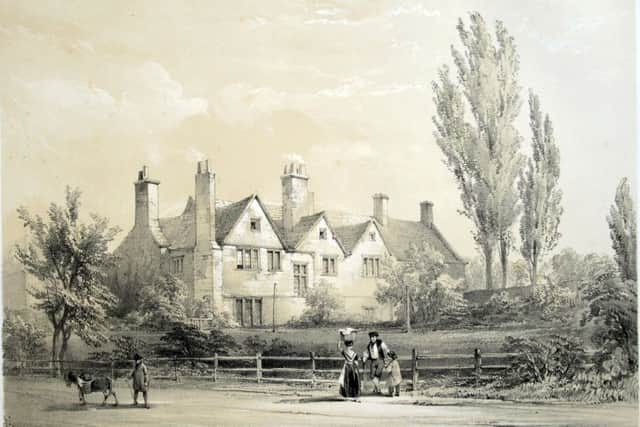Capturing Wakefield before there were cameras


The works objectively record a place and typify a simplicity of execution, contrasting starkly with the deeply intellectual approach to art often found today.
Embracing technique, materials and aims, topographical artists brought the watercolour medium up to the level and the same acceptance as works in oils.
Advertisement
Hide AdAdvertisement
Hide AdTechniques involving ink, pen and watercolour tints were most likely employed because they were easy to carry and use outdoors, especially in remote spots.


Early exponents of the art obtained commissions from landed gentry eager to have representations of their estates. Artists also recorded the latest discoveries of the antiquarian, naturalist and archaeologist.
Subjects in Yorkshire that found common interest included Bolton Abbey, Roche Abbey, Conisbrough Castle and Whitby Abbey. Many noted topographers sojourned in Yorkshire including Francis Place, Joseph Mallord Turner, Michael Angelo Rooker, Thomas Girtin, John Cozens, John Sell Cotman, Peter De Wint and Paul Sandby.
The Chantry Bridge Chapel at Wakefield was a delightful subject for many, including Turner, who visited the location on his first tour of Yorkshire in 1797. During his career, he sketched and painted in more than 70 Yorkshire locations and from a variety of different angles.
Advertisement
Hide AdAdvertisement
Hide AdYorkshire pictures, like those of Turner and others, probably inspired a young Thomas Kilby to take up topographical painting in his spare time and produce some wonderful scenes in and around Wakefield during the early to mid 19th century.


There are scant details about his life and even fewer about any artistic training. From an obituary and a small piece in Kate Taylor’s Worthies of Wakefield (2004) we learn he was born in York in 1794, the son of John Kilby, who became Lord Mayor of York ten years later. After studying at Oxford’s Queen’s College he was ordained in 1820, became curate at Lincoln in Craven, then curate at Felskirk, near Thirsk. A move to Wakefield came in 1824 when he was appointed curate at the parish church but moved to the more prestigious St John’s as vicar in December 1825. He stayed there until his death on September 5 1868.
Disappointingly, there is no known picture of him.
In 1837 Kilby executed original sketches from life which were published as lithographs, and Taylor adds: “The subjects are of rustic figures surrounded by foliage and may reflect a visit to Italy and Germany.”
In 1843 he produced the series of drawings Scenery in the vicinity of Wakefield by an amateur. These were presented in a sizeable book, and again as lithographs, undertaken by Kilby himself.


Advertisement
Hide AdAdvertisement
Hide AdBut, ten years later Views in Wakefield – an enormous book of lithographs – appeared and these were more competent interpretations of Kilby’s original works by William Bevan.
Artistically, Bevan’s interpretations are tight, less stylised than Kilby’s earlier efforts, the compositions more considered, light and shade intelligently planned and the figures carefully observed.
The use of the lithographic medium, which is essentially the interplay of black, grey and white also works marvellously.
Kilby has provided accompanying captions with the plates and they are informative recollections of a particular area’s history. This is more than helpful when admiring images of the Market Cross, Six Chimneys Kirkgate, Wood Street looking north, and Bread Street looking east. They also provide a useful source for the local historian.
Advertisement
Hide AdAdvertisement
Hide AdTopographical drawings as lithographs or engravings in large books, the title invariably embossed with gold leaf on the front, were produced in abundance by entrepreneurial printers throughout the 19th century.
Kilby can be described as a talented, if not leisurely, amateur and historians will forever be in his debt for recording Wakefield before postcard photographers burst on to the scene.